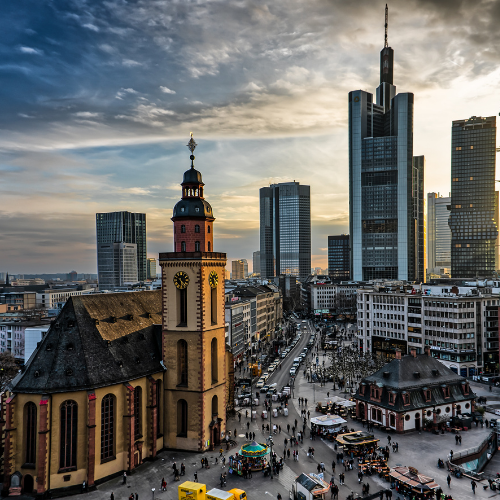Megacities, Megarisks: How Population Growth and Climate Change Increase Vulnerability in the World’s Largest Cities
Written by Alex Casey, Senior Communications Fellow | Published: May 20, 2022
In 1975, the world had three cities with more than 10 million people, also known as megacities: Tokyo, New York City, and Mexico City. Today, there are 33 megacities, 27 of which are located in developing countries. Nine of the ten cities projected to become megacities by 2030 will be located throughout Africa and Asia— in countries where fertility rates tend to be high and populations are rapidly urbanizing.
Ben Wilson, the author of Metropolis: A History of the City, Humankind’s Greatest Invention, predicts that by 2025, 440 cities with a collective population of 600 million will account for half of the world’s gross domestic product. Cities, especially megacities, are economic vehicles that spur development, technological innovation, employment, and sometimes, a better quality of life. That being said, rapid growth of urban areas often exacerbates social and environmental challenges such as natural resource scarcity, unemployment, and income inequality. Studying rapid urbanization and the global rise of megacities is increasingly relevant as climate change threatens dense populations, especially along coasts and in areas facing fresh water scarcity.
Mumbai is routinely ranked as one of the world’s most climate vulnerable cities—it’s subject to sea level rise and devastating storms. The city receives 94 inches of rainfall annually. What was once seen as a once-every-few-years occurrence, climate-induced floods now happen on an annual basis—disrupting transportation, causing fatal landslides, and increasing the prevalence of water-borne diseases. All the while, India’s commercial capital has expanded—from 1991 to 2018, the city lost 58 percent of its open space. During the same time period, the city grew by over 7 million people. Today, Mumbai is home to 21 million people. Due to the lack of affordable housing options in Mumbai, people who are evicted from hazardous neighborhoods often relocate to even more climate vulnerable ones.
Already, most of the world’s population lives in cities, and by 2050, the UN projects that 68% of people will be urban dwellers. Rapid urbanization can push lower-income populations to more climate vulnerable fringes of the city. Many coastal megacities have started to face increasingly severe climate risks from development and growing populations that drive expansion into flood-prone areas, especially as sea levels rise. By 2050, 800 million people in 570 cities could be at risk from sea level rise.
These issues are actively playing out in Lagos, Nigeria, the largest city in Africa. In 2016, water supply throughout the megacity was half of what was needed to sustain its burgeoning population. By 2100, Lagos is projected to be the largest city on earth. A growing population will continue to impact access to natural resources like fresh water and expose more people to climate-induced disasters, like sea-level rise and floods. Waterfront slum communities face especially high risk.
Some megacities have already started to adapt. In an effort to outrun sea level rise, Indonesia will move its capital from Jakarta to Borneo by 2024. One of the world’s most populated urban areas, Jakarta is home to 10 million people and 30 million more in surrounding areas. Population pressures, social inequalities, and high rates of poverty have contributed to the over-extraction of groundwater, so much so, that the city sinks at a rate of about 6.7 inches per year—a phenomenon called subsidence. When populations overuse groundwater, a few things happen. First, groundwater tables can become contaminated with seawater and other pollutants because people have to drill deeper into the ground, closer to the sea level, to retrieve fresh water. Second, in historically low-lying areas, like Jakarta, lowering groundwater tables can cause aquifer systems to compact, causing the land above to sink. Already, Northern Jakarta is 90% below sea level, and 60 percent of Jakarta’s residents live in informal, low-income, high-density housing—especially vulnerable to flooding.
Mumbai, Lagos, and Jakarta are just a few of the world’s megacities actively grappling with rapid development, sea level rise, and other climate-related disasters. The challenges these and many other cities and megacities face in the coming decades require immediate and dedicated attention on the adaptation and resilience front. On the mitigation side, slower population growth in vulnerable regions would reduce the number of people exposed to climate crises, and a massive decline in per capita emissions in wealthy countries would reduce greenhouse gas emissions, slowing climate change and its accompanying threats.

